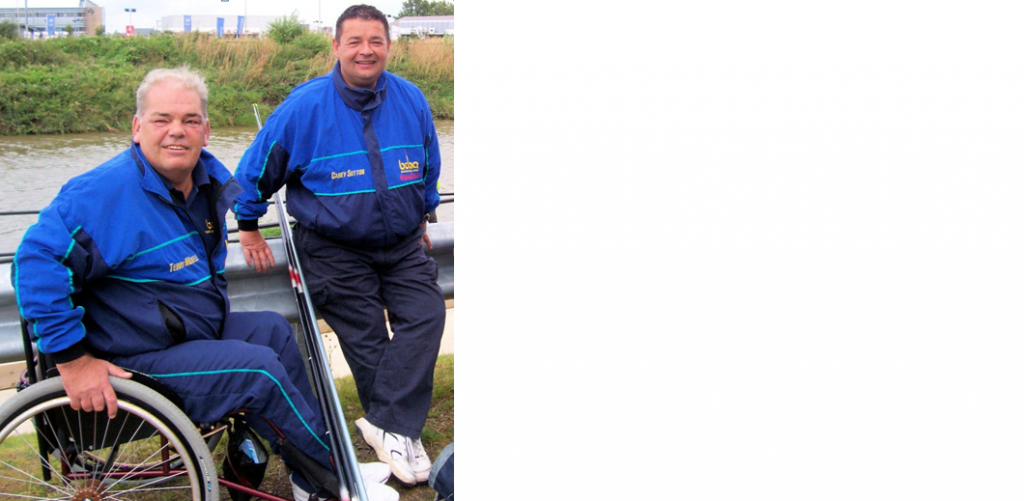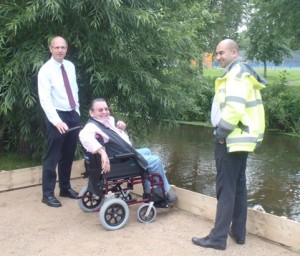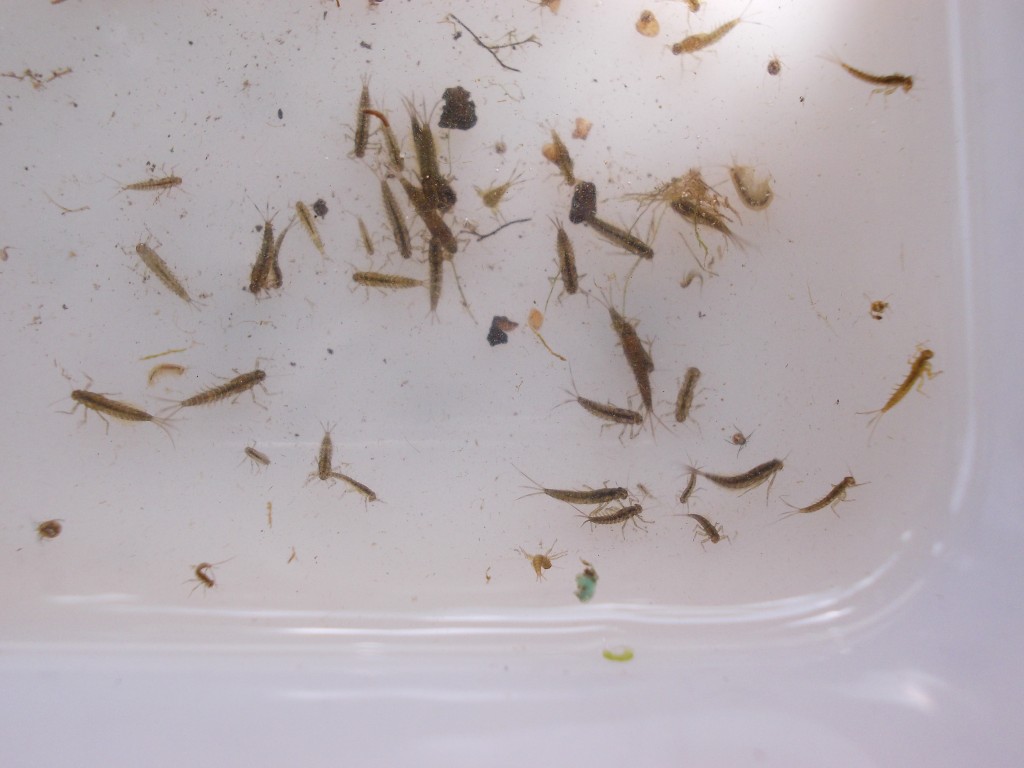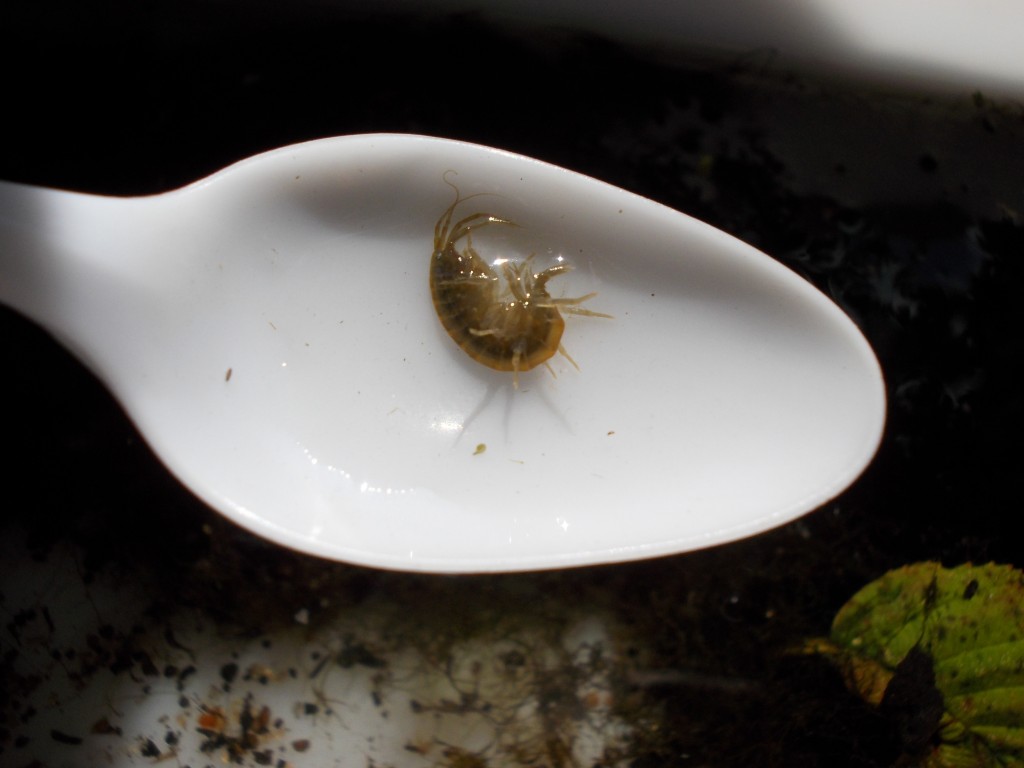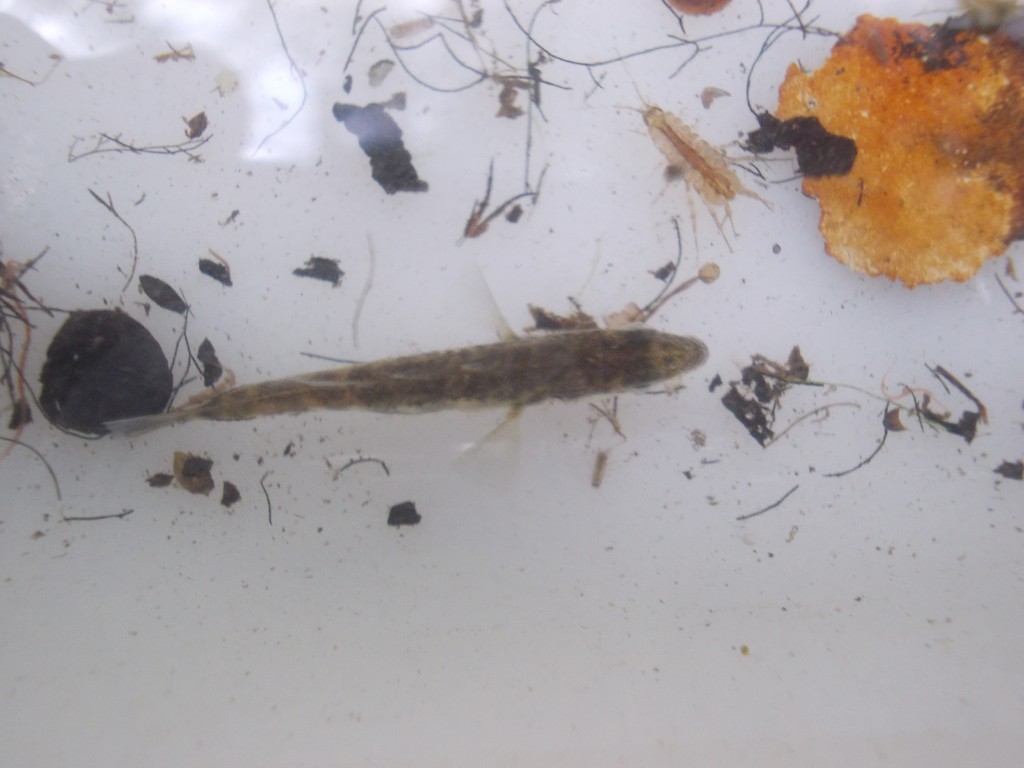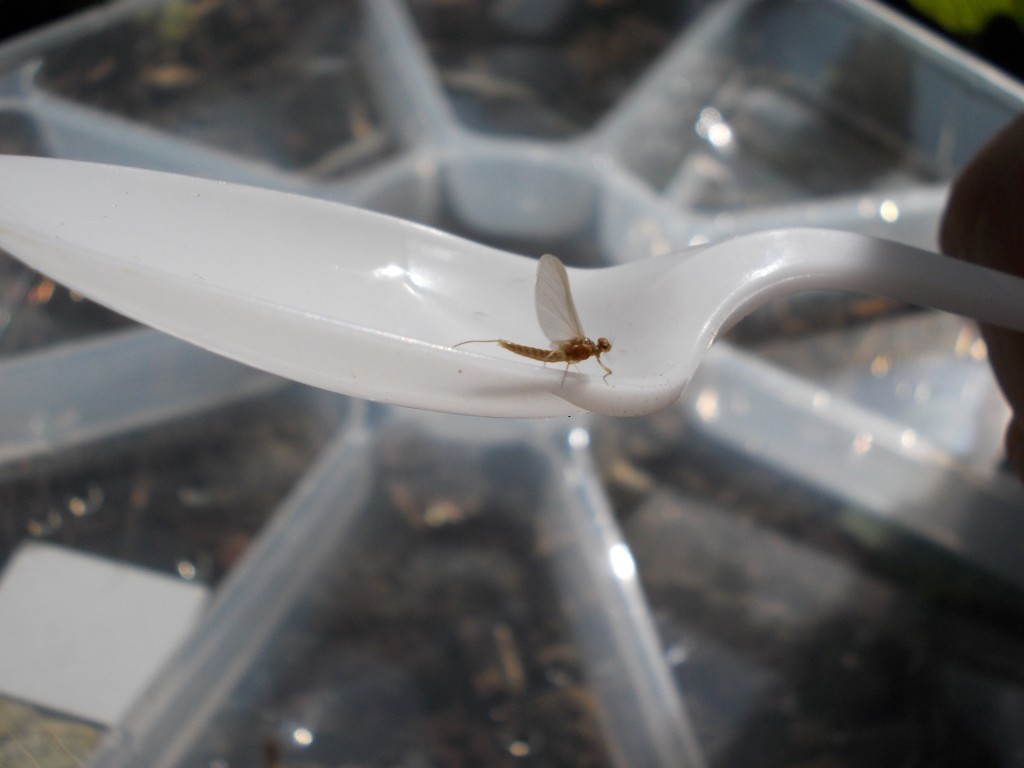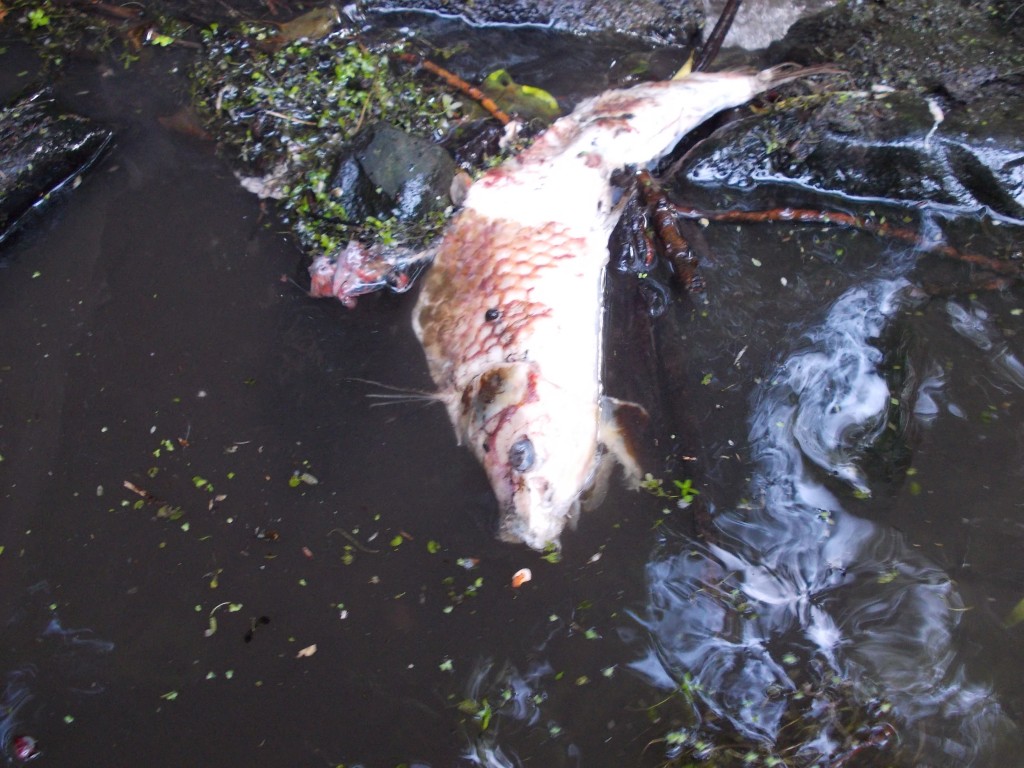-
- Buy a UK rod licence: EA Link
- 0800 807060 EA Hotline, Pollution, Poaching
- Thames Region River Levels
- Thames River Conditions
- Thames Temps and Clarity
- Thames Fishing Byelaws
- Thames Annual Tidefest
- Thames Record List
- Thames Eel Monitoring
- EA Annual Fisheries Report
- EA Flood Warnings
- Thames Sewage Discharge Notifications
- Thames Sewage Events
- Thames Tideway Tunnel
- River Thames Scheme: Reducing flood risk from Datchet to Teddington
- Martin Salter: Fighting for Fishing Blog
- Duncan Charmans World of Angling Blog
- Angling Trust
- Water and sewerage companies in England: environmental performance report 2013 – 2016
- EA Pollution incidents: 2014 evidence summary
- EA Pollution incidents: 2015 evidence summary
- River Crane and DNR Fisheries Impact assessment
- Links
Recent Tweets
Error retrieving tweetsNews Archive
Environment Agency in Bank Holiday Licence blitz
There is a wide variety of excellent waters available for keen anglers from trout reservoirs and gravel pits to commercial fisheries and smaller ponds. During a similar blitz in July, 499 licenses were checked across Bedfordshire, Cambridgeshire and West Norfolk and 20 anglers found unable to produce a licence.
They were issued with offence tickets and will almost certainly end up in court. Now the same approach is being used again across Essex.
Lesley Robertson, Environmental Crime Team Leader said: “Environment Agency fisheries enforcement officers will be patrolling waters in Essex and anyone found fishing illegally may face prosecution and a hefty fine. “All anglers need a valid Environment Agency rod licence which allows them to use up to two rods. Rod licences run from 1 April to 31 March and fishing without one can lead to a substantial fine.” Lesley added: “All the money the Environment Agency receives from rod licence sales is spent improving fisheries. People who don’t buy a licence are cheating their sport and other anglers so we urge you to help us crackdown on unlicensed anglers by reporting this illegal activity to us on 0800 80 70 60. “You can also pass information onto Crime Stoppers anonymously on 0800 555 111 or use a secure online form at www.crimestoppers-uk.org.”
An annual rod licence for the 2012/13 season remains at 2011 prices, costing £27 for non-migratory trout and char and freshwater fish and eels or £72 for salmon and migratory trout. Concessionary licences, which cost £5, are available to juvenile anglers (aged 12-17). Anglers under 12 do not require a licence. Anglers over 65 and anyone with a Blue Badge parking concession or in receipt of Disability Living Allowance also pays the concessionary adult rate of £18 (non-migratory trout and char and freshwater fish and eels) and £48 (salmon and migratory trout).
Posted in News
Tagged Environment Agency, Poaching
Comments Off on Environment Agency in Bank Holiday Licence blitz
River Wandle Pollution Alert Following Fire at Beddington Sewage Works
Following a major fire at the Beddington Sewage treatment works overnight, there have been reports of dead fish being seen in the River Wandle in West London.
For the latest information and to report any sightings, please go to the Wandle Trust live blog
Posted in News
Tagged Environment Agency, Pollution, Sewage, Thames Water
Comments Off on River Wandle Pollution Alert Following Fire at Beddington Sewage Works
Vote for the best River Thames lock
 River Thames’ users are invited to vote for the best kept lock as the Environment Agency launches its annual waterways awards.
River Thames’ users are invited to vote for the best kept lock as the Environment Agency launches its annual waterways awards.
Voting has opened for the ‘Best Lock Site’ award. River users and other members of the public who visit the rural River Thames between Lechlade and Teddington are being asked to vote.
The Thames Waterways Award rewards the hard work of waterways staff along the River Thames and encourages good customer relations. Matt Carter, Waterways Operations Manager at the Environment Agency, said: “ A variety of people contribute to the overall customer experience – permanent staff, seasonal staff and volunteers. The awards provide a chance for members of the public to let us know how we are doing on the River Thames, so we can reward these people for their great teamwork.”
Votes can be cast online at www.environment-agency.gov.uk/bestthameslock from now until Sunday 31 October and winners will be announced in December. When voting for the Best Lock Site, river users are asked to rate the level of service received at the lock and consider the locks' gardens, general maintenance, cleanliness and availability of information. Everyone who casts a vote this year will be entered into a prize draw with the opportunity to win a 20 per cent discount on next year's River Thames boating licence. The 2012 waterways awards are kindly sponsored by Peter Brett Associates LLP.
Posted in News
Tagged Environment Agency, Thames
Comments Off on Vote for the best River Thames lock
Thames region set for improved disabled access to rivers
The Environment Agency is helping to improve disabled angling access at two sites on the Thames regions rivers
Following on from the success of the fishing platforms installed at Penton hook in 2011, Cookham weir stream is being added to the annual Environment Agency Lock and weir fishing permit.
Terry Moseley and Carey Sutton of the BDAA
The British Disabled Angling Association (BDAA) represented by President, Terry Moseley and Access Officer, Carey Sutton were invited to view the proposed site and conduct an audit to review it’s potential for disabled anglers. With disabled toilet facilities already on site it is hoped that Cookham will be a valuable new addition to the the permit later this year.
Details can be found Here for the current fishing opportunities at EA lock and weir sites on the Thames including details on how to obtain a permit
Angling access improvements at Gogmore Farm have seen the Environment Agency teaming up with Runnymede Borough Council to improve and encourage angling access on the River Bourne at Chertsey.
With EA funding, July saw work start on 3 new fishing swims which, in addition to able bodied anglers, will facilitate access to wheelchair users.
Tony Babbage OBE (centre) with Runnymede Borough Council’s Peter Winfield and Faouzi Saffar
Distinguished local resident Tony Babbage OBE, a lifelong angler and campaigner on community issues recently attended the site along with Runnymede Parks and Amenities Manager Peter Winfield, Council Engineer, Faouzi Saffar and EA Fisheries Officer Stuart Keable. The swims will be officially opened later this summer.
Posted in News
Tagged Environment Agency
Comments Off on Thames region set for improved disabled access to rivers
Environment Agency report shows more summer groundwater recharge
 A further wet month building on the foundations laid since April this year, saw the phenomenon of summer groundwater recharge continue across the South East of England, allowing many rivers and aquifers to recover to conditions more usual for late winter than mid summer.
A further wet month building on the foundations laid since April this year, saw the phenomenon of summer groundwater recharge continue across the South East of England, allowing many rivers and aquifers to recover to conditions more usual for late winter than mid summer.
Rainfall
July was another wet month with double the long term average rainfall. The highest daily rainfall total of 44mm was recorded on the 7 th at Felbridge STW in the Eden catchment. Most of the rain fell in the first half of the month with warm dry weather prevailing in the last week of July. It was the 10 th wettest July on record – the second wettest in the last 50 years, with only July 2007 recording more rainfall. The past four months have seen exceptional rainfall for the time of year, the most on record (back to 1910) for April to July. Despite below average rainfall in May, the South East of England has still had an exceptional 190% of average rainfall since April. The persistent wet conditions of the past months contrast very markedly with the drought conditions in the South East over the winter of 2011-12.
Soil Moisture Deficit
Recharge and Groundwater Levels Soil moisture deficits are lower than normal for the time of year, and there have been some exceptional recharge totals which have been more in line with the averages we would expect during the winter months. Groundwater levels have continued to rise at most of the key sites this month, something only rarely observed at this time of year. At Chilgrove House, the site with the longest record in the Region, the last time significant summer rises in groundwater levels were seen was back in 1924. By the end of this month levels were the highest for the end of July for more than 100 years. Groundwater levels have recovered remarkably in the past three months from record lows at the end of March to some of the highest ever seen at this time of year in some areas. Jackaments in the Cotswolds Great Oolite had the second lowest levels on record for the time of year at the end of March, but this month had the second highest recorded in July. Recovery has been slower in some areas like the Chalk of the East Chilterns and Upper Lee as well as in parts of Kent, but in many places levels are now similar to average for the end of the winter period and are exceptionally high for the end of July.
River Flows
River flows responded to the rainfall during the month and were the highest on record for July for the Lymington River, Itchen, Western Rother, Arun, Ouse and Medway. The Coln, Thames at Eynsham, Loddon, Wey, Thames at Kingston and Darent all had the second highest July flows on record. A total of fifty five flood alerts were issued across the region, mainly for urban catchments, and in Essex, two flood warnings were issued on the Rivers Roding and Ingrebourne after heavy rain on the 7 th . Reservoir Storage/Water Resource Zone Stocks Reservoir storage is above average across the region as reservoirs have benefited from the elevated rainfall and river flows in the past four months. Reservoir stocks have remained stable throughout the month with the exception of Bough Beech.
Full report
Posted in News
Tagged Drought, Environment Agency, Flood, Water Report
Comments Off on Environment Agency report shows more summer groundwater recharge
Pollution kills 3,000 fish in the Burniston Beck, EA appeals for information
 The Environment Agency is appealing for information, following a serious pollution incident leading to the death of almost 3,000 fish in Scarborough.
The Environment Agency is appealing for information, following a serious pollution incident leading to the death of almost 3,000 fish in Scarborough.
An officer visited the beck the same day and found around 60 dead fish, including trout and bullheads, within a 100m stretch at Rocks Lane, Burniston.
Further inspection revealed hundreds more dead fish between Burniston Community Centre and Station Road in Scalby. Other officers were called to the area and samples were taken in an attempt to locate how and where the pollution started. Since the initial report the Environment Agency has taken numerous calls about the incident, some of which suggest the pollution may have occurred on Saturday 4 August. A biological survey was carried out to determine the extent of any ecological damage, which was not as bad as first thought. The incident was confined to Burniston Beck, and although the estimated number of dead fish totalled nearly 3,000, including over 800 brown trout, live fish have since been seen swimming in the beck.
The survey also showed that the local invertebrates – beetles, shrimps and other creatures – appear to be unaffected. A survey to determine the number of fish remaining in the beck will be carried out soon.
Stephen Richardson said: “It appears the pollution may have started in the Lindhead area and quickly travelled downstream, with a rapid impact on the watercourse. The results of our samples show no indication of what the pollutant was or what caused the fish to die, and the quality of the water is still very good. “This is a very serious incident that we believe has been caused by a deliberate act. We will not hesitate to prosecute should we find the person or persons responsible.” Members of the public are being asked If they have any information which may help the investigation to contact the Environment Agency on 0800 80 70 60.
Posted in News
Tagged Environment Agency, Fish KIll, Pollution, Sewage
Comments Off on Pollution kills 3,000 fish in the Burniston Beck, EA appeals for information
Northumbrian Water fined £3,000 for polluting a stream with Sewage
 Northumbrian Water Limited was fined a total of £3,000 after pleading guilty on Monday 6 August 2012 at Peterlee Magistrates Court to polluting a stream at Shotton in County Durham.
Northumbrian Water Limited was fined a total of £3,000 after pleading guilty on Monday 6 August 2012 at Peterlee Magistrates Court to polluting a stream at Shotton in County Durham.
Northumbrian Water Limited (NWL), of Abbey Road, Pity Me, County Durham, was fined £3,000 and ordered to pay full costs of £2,429.75 to the Environment Agency, which brought the case. The court heard from Niall Carlin, prosecuting for the Environment Agency, that an Environment Agency officer visited Gore Burn on 18 June 2011, following a report from a member of the public. He found that a stretch of the Burn was grey coloured and smelt of sewage and detergent. He located the source of the effluent upstream as a sewer overflow at on Calfpasture Burn at Shotton Lane, Bracken Hill, Shotton Colliery, County Durham owned by Northumbrian Water Limited.
Samples of water were taken and later analysed to discover how much oxygen had been stripped from the water by the pollution, and so was not available for the aquatic life. The analyst’s report said that a “significant quantity of effluent” had entered the stream and that the incident was likely to have a further significant impact on the ecology of Wapping Burn, which Gore Burn flows into. The report also stated that the effect “will be highly detrimental and long-lasting and have consequences for the quality of [the watercourse]”.
The Environment Agency classified this as a Category 2 Incident, their second most serious category, as there would be significant impacts from this discharge over several hundred metres. An officer from NWL was interviewed under caution. It was admitted that the sewer overflow had overflowed due to a blockage, rather than a flood. There was a system in place to prevent overflow, but it had not worked. There had been a history of problems with this outlet, and NWL had been prosecuted for a similar discharge at this site in May 2010. In mitigation it was said that NWL acted quickly. The incident was reported to them at 12.29 hours, a crew came to the site at 13.15 and the blockage was cleared at 14.15. NWL have now increased their inspection schedule of the sewer overflow from four to six times per year.
Speaking after the case Jamie Fletcher of the Environment Agency said: “This was a serious case of pollution of a stream which had an impact on the environment. Everyone has a duty to protect the environment and we will not hesitate to prosecute if an individual or company has failed in this responsibility.”
Posted in News
Tagged Environment Agency, Fish KIll, Pollution, Sewage
Comments Off on Northumbrian Water fined £3,000 for polluting a stream with Sewage
Second National Angling Survey Launched After Overwhelming Response
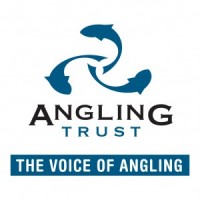 With nearly 30,000 anglers completing the National Angling Survey in less than a month, the Angling Trust and Environment Agency have today launched the second phase of the research, this time targeting organisations.
With nearly 30,000 anglers completing the National Angling Survey in less than a month, the Angling Trust and Environment Agency have today launched the second phase of the research, this time targeting organisations.
Anyone who is involved in angling participation projects, angling clubs, fisheries, tackle shops and trade or who has worked with angling for wider social benefits is encouraged to take part. The Angling Organisation Survey asks detailed questions of those running angling projects and will take about 20 minutes to complete. It aims to find out what techniques have been most successful in getting more people fishing more often, and where more support is needed for the growing number of organisations involved in angling participation and social projects.
The survey remains open until the end of August and is hosted on the Angling Trust web site at:
www.anglingtrust.net/anglingorganisationsurvey
Angling Projects, Get Hooked on Fishing, Dreamstore, Fishing for Heroes, Fishing for Forces, Casting for Recovery and Fishing For Schools are all examples of highly successful programmes that are boosting angler numbers and also boosting health, wellbeing and community cohesion through angling. The number of people working in this sector at a local level has exploded in recent years; now there are hundreds of people working locally and nationally to increase angling participation and to use angling to improve people’s lives. Along with the National Angling Survey, this research with angling organisations will help inform a National Angling Participation Plan (NAPP) for England and Wales, which is being co-ordinated by the Angling Trust, as the National Governing Body for angling in England.
The Plan aims to encourage greater partnership working between many organisations taking part, and to create pathways for new anglers to follow so that when they leave one project they are able to take the next steps to taking up angling for life. The NAPP will also create an impressive overall picture of all the pieces in the angling jigsaw to potential funders.
More than 40 professionals from the angling world, including large national organisations such as the National Trust, the Canal and Rivers Trust and The Rivers Trust met up in Birmingham with staff and volunteers from bodies such as the Albrighton Trust, the Masonic Fishing Charity, the Wheelyboat Trust and the Community Angling Regeneration Project (CARP) at an event organised by the Angling Trust last week. At a very positive and constructive meeting, these experts provided important input to the development of the NAPP, which will be completed in the autumn.
Mark Lloyd, chief executive of the Angling Trust said: “We are delighted with the response to the individuals survey and also from the many people who gave up their time to support the event last week. There is so much fantastic work going on around the country to improve and increase angling, but far too often the hard work of volunteers and staff is not reported outside angling and so it doesn’t get the support it deserves. We want to shout about angling’s achievements from the rooftops, and this Plan will help us do that.”
Richard Wightman, Angling Manager at the Environment Agency said: “Holding such a positive, collaborative meeting as the one we had last week would have been unthinkable a decade ago. We might have got forty people in a room but there wasn’t the agreement or capacity to deliver ambitious programmes afterwards. Angling has achieved a huge amount in recent years through the dedication and co-operation of a wide range of organisations. The NAPP aims to continue that process and to develop a clear strategy for the future of angling for the next generation. We are very pleased to be able to support its development and look forward to seeing the final report in the autumn.”
Posted in News
Tagged Angling Trust, Environment Agency
Comments Off on Second National Angling Survey Launched After Overwhelming Response
Signs of recovery in the polluted River Crane
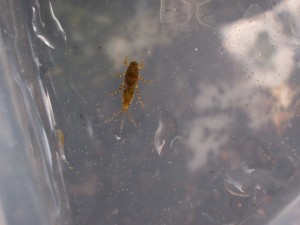 The River Crane in West London is showing signs of recovery with life returning following the devastating pollution incident in October 2011.
The River Crane in West London is showing signs of recovery with life returning following the devastating pollution incident in October 2011.
Blue Winged Olive
The first monthly kick sampling by volunteers from the Thames Anglers Conservancy revealed that life is returning to the river since the sewage pollution which destroyed over seven miles of river wiping out over 10,000 fish including mature Carp, Barbel and Perch. The pollution was caused by the failure of a Thames Water Penstock gate near Heathrow during routine maintenance, Thames Water have since agreed a £400,000 fund to restore the river to its former glory and improve the robustness against any further incidents.
The sampling by the TAC is part of the Anglers Monitoring Initiative (AMI) and follows training by the Riverfly Partnership, all results are fed back to the Environment Agency.
Kick sampling at the two sites showed the invertebrate community, that is part of the natural food chain, has returned where there is clean gravel but results were not consistent. Signs of the pollution are still evident with a dead Koi Carp found in a marginal area along with sewage litter.
The recovery of the entire river will be long and any fish restocking unlikely to happen before the spring of 2013.
Olives found at Crane Park
Healthy Gammarus freshwater Shrimp
A Stickleback found at Donkey Wood
Upwing Riverfly just hatched
Small Carp found dead in a Crane Park marginal area
TAC
Posted in News
Tagged Fish KIll, Pollution, River Crane, RiverFly, Sewage, TAC, Thames Water
Comments Off on Signs of recovery in the polluted River Crane
BBC, Swans and Lead Poisoning: Statement from the Angling Trust
 BBC Midlands Today broadcast a news item about swans being poisoned by lead on the River Severn on the 10th July, which included an interview with Jan Harrigan, who is a well-known campaigner against angling.
BBC Midlands Today broadcast a news item about swans being poisoned by lead on the River Severn on the 10th July, which included an interview with Jan Harrigan, who is a well-known campaigner against angling.
The piece included reference to lead poisoning from split shot. The Angling Trust found out about this story third hand at 10pm last night and we immediately sent a statement to the programme informing them that there is no evidence linking alleged lead poisoning of swans with lead shot, which was banned more than 20 years ago.
A far more likely culprit is the lead flashing on the bridges on the Severn which has been found in large quantities on the riverbed in this area. The BBC had arranged to speak to a local angler, but he wisely withdrew from the interview this morning. The Angling Trust statement was only partially referred to on the programme. We have spoken to the programme producers today to express our dismay at the misrepresentation of angling.
They have agreed to edit the evening programme to ensure that our statement is included along with a statement from the Environment Agency confirming our position. We offered a spokesman this afternoon, but no BBC cameramen were available to interview us.
The implications of this broadcast are potentially very serious for angling and it is very frustrating that this story has been shown, given that there is no scientific data to back up the claims being made by the anti-angling campaigners. The Angling Trust has made great progress in the past year working closely with the National Swan Convention and the RSPCA to tackle issues of angling litter (line and hooks) affecting swans. Anyone who wishes to contact the programme to let them know that anglers are not the cause of this alleged problem, and that we are in fact responsible for reporting the vast majority of pollution incidents and carrying out hundreds of thousands of volunteer-hours of environmental improvement work each year, should e-mail midlandstoday@bbc.co.uk Issues such as this demonstrate the importance of having a strong voice for angling.
Posted in News
Tagged Angling Trust
Comments Off on BBC, Swans and Lead Poisoning: Statement from the Angling Trust


